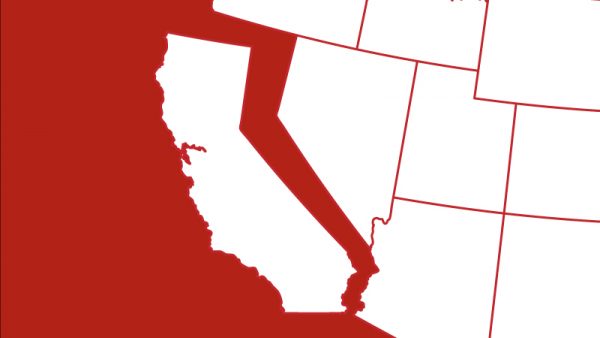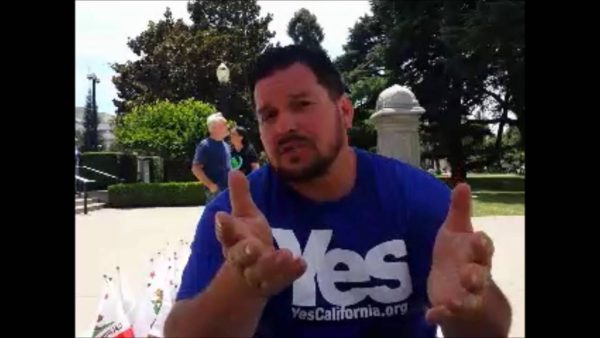 California’s been described as a nation unto itself. Could it be?
California’s been described as a nation unto itself. Could it be?
“Yes California,” a pro-secession group, filed paperwork with the state attorney general in November for a proposed 2018 ballot measure to strike language in the state constitution binding California to the United States.
This month, the group announced the opening of a “cultural center” in Moscow — “the first of many planned California culture centers which will serve to build a bridge between the nation of California and the nations of the world,” read a statement on Yes California’s website.
If its ballot measure succeeds, Yes California would pursue a 2019 vote to declare the state’s independence. At least half of the state’s voters would have to cast ballots and 55 percent would have to choose independence for California to become its own nation, according to document Yes California filed with the Attorney General’s office.
Talk of California secession is nothing new. But it gained momentum after Donald Trump’s election. Hillary Clinton got 62 percent of California’s vote in defeating Trump, the largest margin of victory for a presidential candidate in the state since 1936.
The November election, which gave Republicans the White House and continued congressional dominance, underscored California’s political divergence from the rest of the country.
While the GOP controls most state legislatures and governorships, Republicans are a shrinking minority in the Golden State, where Democrats control the Legislature, 39 of 53 congressional seats and all statewide elected offices.

California’s Democratic leadership has vowed to fight Trump over his plans to deport undocumented immigrants and repeal Obamacare, and California’s battle against global warming is at odds with climate change skeptics in Trump’s cabinet.
In arguing for independence, Yes California contends that the state’s tax dollars subsidize the rest of America and that red-state politics marginalize California’s more progressive values. California can stand alone as a world economic power, secession advocates say.
“We believe in two fundamental truths,” reads a statement on Yes California’s website. “(1) California exerts a positive influence on the rest of the world, and (2) California could do more good as an independent country than it is able to do as a just a U.S. state.”
Even if a ballot measure qualifies — 585,407 signatures are needed — and a majority of Californians want to secede, an independent republic of California faces very steep odds. The question of whether states can split was answered in blood by the Civil War and in law by an 1869 U.S. Supreme Court decision that found no right to secession in the U.S. Constitution.
According to Yes California, a path to secession exists through the U.S.-ratified United Nations charter. But it’s hard to see Washington recognizing UN authority on this issue, nor is it clear how many nations would risk America’s wrath by recognizing an independent California, home to 12 percent of the U.S. population and a vital part of the nation’s economy and food supply.
Independence activists could pursue a constitutional amendment to let California secede. But that requires ratification from three-fourths of the state legislatures.
California can assert itself in ways other than secession, said Jack Pitney, a professor of politics at Claremont McKenna College.
“Federalism allows each state wide latitude in setting its own polices,” he said. “As (Gov.) Jerry Brown says, we could launch our own climate satellite (to study climate change) if the feds don’t want to.
“State officials can also push back in federal court, which is why Brown picked Xavier Becerra as attorney general,” Pitney added. Becerra, a Democratic congressman from Los Angeles, is widely expected to challenge the Trump administration in court, especially over immigration policy.
SPLIT THE STATE
Throughout California history, there’s been talk about splitting up the state and discussions of splitting from America. The state is politically divided between coastal and inland regions and the more liberal urban cores versus more conservative rural areas.
While Clinton won the statewide vote, Trump won many of California’s less-populated, more inland counties, including Siskiyou and Modoc counties in the north and Kern County north of Los Angeles County.
The state of Jefferson concept, which would combine parts of rural Northern California with southern Oregon, dates back to at least the 1940s. In recent years, county lawmakers and voters in five Northern California counties have approved ballot measures or passed resolutions in support of Jefferson.
In 2009, then-GOP Assemblyman Bill Maze proposed the state of Coastal California consisting of 13 counties, including Los Angeles and San Francisco. Maze argued that coastal liberals politically drowned out California’s more conservative regions.
The desire to create a conservative haven led then-Riverside County Supervisor Jeff Stone in 2011 to propose the state of South California. Thirteen counties, including Orange, Riverside and San Bernardino, would have been part of this 51st state.
In 2013, venture capitalist Tim Draper sought to split California into six states, which he said would be more responsive to local residents and easier to govern. A measure putting the six-state concept before voters failed to gain enough signatures.
So, it’s doubtful California will be divided into multiple states or split from the rest of the nation — unless the San Andreas Fault gets active. Remember those “California’s shaking away” earthquake fears?
DAILY NEWS
Leave a Reply
You must be logged in to post a comment.